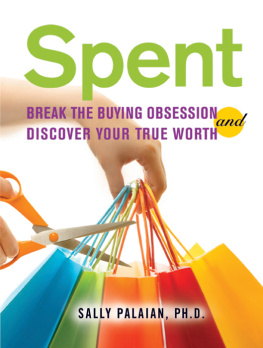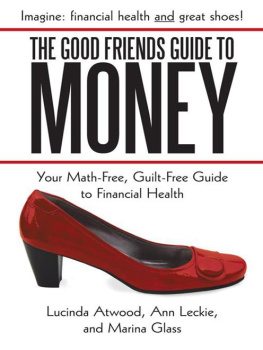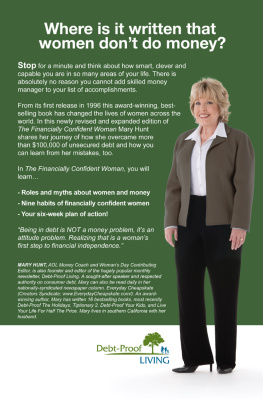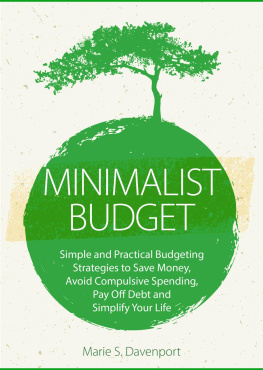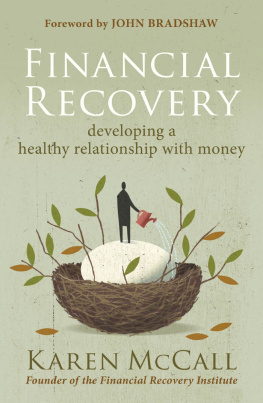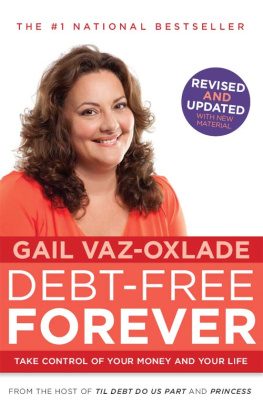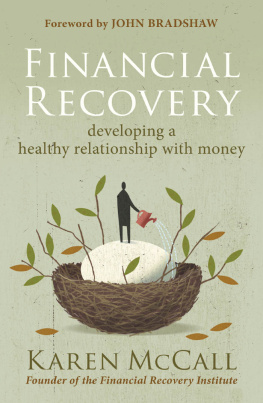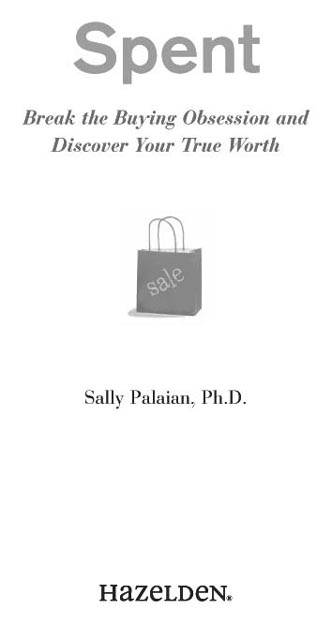As this book goes to press, the world is in economic turmoil. Banks have changed their lending practices and credit has become more difficult to obtain for both individuals and businesses. Economists are forecasting that things may not improve for an indefinite period of time. Now, as a society, our challenge is to learn about our relationship with money so we can find the balance between financial survival and personal fulfillment. Thats the message of this book, and it will be as timely in a prosperous economy as it is today.
In good times or bad, money issues can wreak havoc in our lives. My hope is that readers of this book will use it to begin a journey of self-discovery about the meaning of money in their lives. For those willing to embark on this uncommon path, there is hope and serenity.
Acknowledgments
Writing this book has taught me that hope and goodness lurk behind every mysterious corner. Wherever I turn, there are always generous and loving people. I would like to thank the following people.
First, my friends Eleanor Payson and Nancy Sparrow, for challenging me to teach and write about money dynamics; without them, I would be happily minding my own business.
Eleanor Payson and Linda Moody, for their unceasing support throughout the writing of this book and for gently nudging me to push through my avoidant and evasive antics.
Betsy Breckels Fortuna, for unconditional friendship and constructive feedback on this manuscript, and Clem Fortuna, for singing The Impossible Dream to us when we climbed out of the Grand Canyon.
Joe Kort, for humor, love, and writerly inspiration.
My very caring and generous siblingsEve and Gary Ezmerlian, Carol and Steve Palaian, Terry and Chuck Palaian, and Laurie and Keith Neher. A special thanks to Lud for joyful playfulness always, and to Helen Kalayjian for tenderhearted, gentle support of my every endeavor.
My mentors Diane Blau, Barb Shumard, and Joy Messick, for seeing me, loving me, and encouraging my adventures. Thanks also to my colleagues and friends who helped me to live and develop the ideas in this book: Dave Balekdjian, Eileen Freedland, Connie Haley, Jane Libby, Jacqueline Polefka, Paul Duskey, Rena Seltzer, Joi Sherman, and Harry Taylor.
Ashlee Roberson, for her efficiency and ability to decipher my handwriting. Jeanne Ballew and Maureen Buchanan Jones, who helped shape early phases of this manuscript.
Thanks to Pat Schneider: lover of spunk, nurturer of souls, and cultivator of writers. Thanks to Cindy Barrilleaux, wordsmith and believer in this book, for not letting me collapse all those times I was exasperated.
Thanks to the staff at Hazeldensolid, good people who do important work.
Thanks to Vince Hyman, genius editor, miracle worker par excellence, kind soul, for asking important questions and working so darn hard to shape this book.
Thanks to my clients, who inspire me with hope and courage.
And to my partner, Gary Haelewyn, for bringing me childlike wonder and adventure, and for teaching me that love is the only treasure worth seeking.

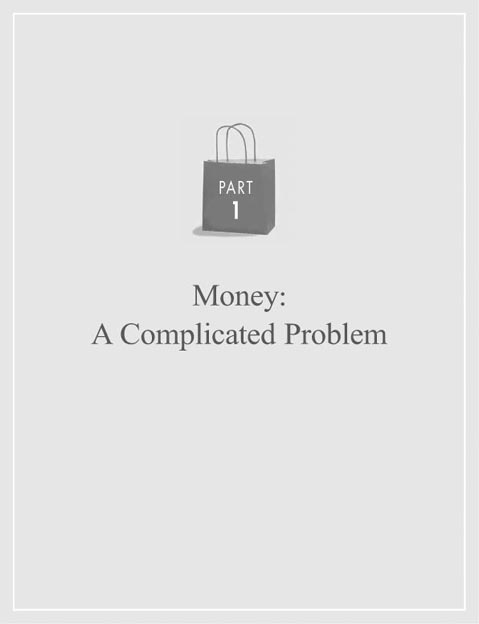

A Prevalent Problem
Eric had already moved out of the house when he arrived at my office with his wife, Susan. He was quiet at first, seething with anger. When he spoke, his first words to Susan were loud ones: I dont care why you do it. I cant take it anymore.
Unable to raise her head, and twirling a tissue between her fingers, she replied, I know its my fault. I dont even know why I do it. He had dragged her to therapy because he was tired of her dramatic excuses, and he was done paying for her spending habit.
Eric had bailed Susan out of debt three times over the course of their twenty-four-year marriage. This time it was for $67,000, the most ever. He found out by accident when her sister mentioned the credit card bill. Susan had been using her sisters address to receive credit card statements. Tired of the lies, and unsure about where he would get the money, Eric was furious.
Susan was trapped: she had to either get help to stop spending or lose her marriage. She had spent years staving off this dreaded day.
Susan began attending therapy to try to understand why she was so troubled. In therapy, she looked at her lifelong pattern and realized that she had always wanted to fit in. In third grade, she used her allowance to buy candy for her friends. As a teenager, she wore her mothers jewelry to school so she could impress her classmates. When her grandparents gave her birthday money, she spent it immediately on makeup or clothes for herself or gifts for her friends.
She recalled that her parents frequently argued about money. Her father was strict with money and often reminded the family of what he provided. Even though her mother was practical about money, she was unable to convince her father to loosen up. Susan bypassed these fights by working at a bakery to pay for her own stylish clothes.
In college, she discovered credit cards. A local bank had set up a booth in the student lounge. She decided to apply. With credit cards, she was finally free from her father. She could buy what she wanted. In the first summer of college, she went to a rock concert in another state with her friends. She charged her meals and the gas when it was her turn to pay. She figured it wasnt a big deal; she could pay the minimum on the credit card, and shed catch up during the school year when her dad was giving her money again. By the time she graduated, she had accumulated $9,000 on two credit cards. She thought it would be easy to pay off once she was employed professionally.

